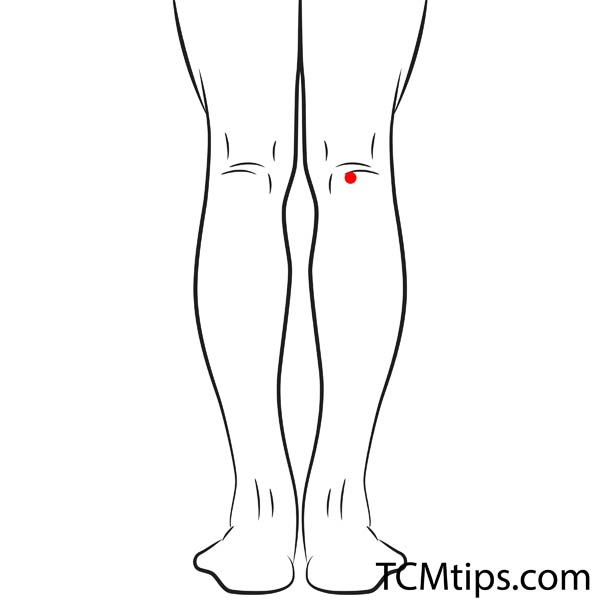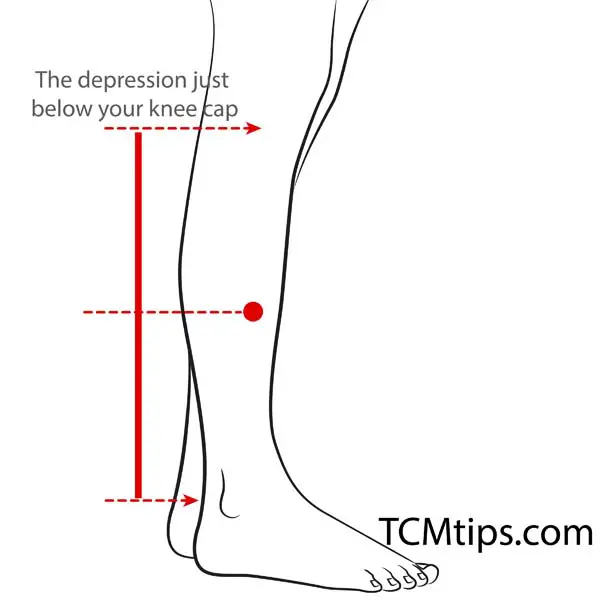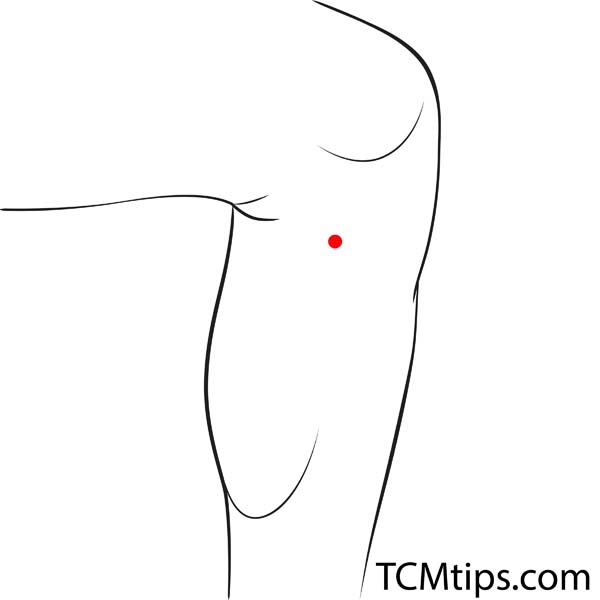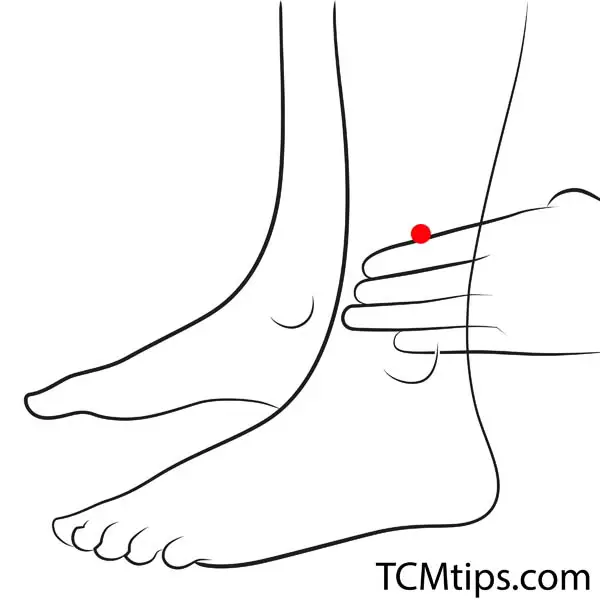If you’re looking to learn more about acupressure points in the leg, you’re at the right place. Experiencing leg pain daily can greatly diminish your quality of life.
Whether it’s because of muscle tension, muscle spasms, or something completely different, acupressure for legs isn’t something that should be underestimated as a medical technique.
Some studies have already confirmed the effectiveness of this popular alternative practice.
According to a very recent 2020 study in the International Journal of Clinical and Experimental Medicine, acupuncture accompanied with massage reduces leg pain and chronic lumbago and improves the clinical efficacy of conventional drug therapy.
In today’s article, I will discuss 6 of the most popular acupressure points in the leg that will step up your next acupressure session. Without further ado, let’s begin.
Where Is The Pressure Point On Your Leg?

I advise everyone in my life to learn acupressure.
It’s something that you can do for yourself anytime and anywhere. It’s not by any means a replacement for medical treatments, especially for serious conditions.
However, it’s still worth exploring as a companion to other treatments.
That being said, let’s take a closer look at some of the most popular acupressure points in the leg. When done properly, acupressure can do wonders for your body.
And your brain, since they’re connected to the brain.
Acupoint: Bl-57 (Other Names: Urinary Bladder-57/Cheng Shan/Support the Mountain)

I’m kicking off this list with BI-57.
It’s one of the most popular acupressure points for leg pain relief and cramps. Therefore, it’s suitable for people who practice acupressure for leg pain and acupressure for leg cramps.
Also known as Support the Mountain, stimulating this point can help with pain or tiredness from the legs to the buttocks due to low back pain or sciatica.
You will notice the positive effects of acupressure right away.
You can locate this point when you extend your toes straight or lift the heel, below the gastrocnemius muscle in the apex of the depression on the posterior midline of the lower leg.
Besides helping with leg pain, leg cramps, and numbness, this leg point is also excellent for constipation, hemorrhoids, and beriberi.
Acupoint: Bl-40 (Other Names: Urinary Bladder-40/Wei Zhong/Middle of the Crook)

Also known as “middle of the crease” or “weizhong”, BI-40 takes place in the middle of the knee crease. It’s one of the most effective points in treating lower back and knee pain.
It’s also believed that this point clears blood, discharges heat, and free connects vessels. You can treat it to improve your overall health because the brain is somehow connected to this point.
According to a study, stimulation of BI-40 could help regulate inhibition and activation of brain activities. It’s also one of the greatest acupressure points for fibromyalgia, hip, and lumbar pain.
Therefore, if you’re someone who suffers from swelling or dullness of your legs, stimulating BI-40 can do wonders for you. It’s common among people who stand all day long.
This acupressure point is harder to push than the acupressure points on the front side of the body. Therefore, lie on your back, extend your knees, and put a tennis ball on the back of your knees to roll and loosen it. Press gently for about 5 seconds and slowly release pressure for about 5 seconds.
Acupoint: ST-40 (Other Names: Stomach-40/Feng Long/Abundant Bulge)

If you’re having issues with circulation, ST-40 is the leg point you should tackle.
Located on the anterior of the leg midway between the tip of the crease of the knee and the point of the lateral malleolus 2 cun lateral of the tibia, this point can help with leg pain, paralysis, lower body edema, and drawing excess water.

People say that ST-40 resolves dampness and phlegm, clears heat, calms asthma, clears the mind, opens the chest, helps with constipation, muscular atrophy, vertigo, headaches, and dizziness. Slowly push and slowly release with enough strength to feel a moderate stimulus. Repeat the process 5 times x 6 seconds.
If you’re looking for acupressure for the leg circulation starting point, this spot makes a great place to start. It’s also one of the greatest acupressure points for indigestion that does wonders.
Acupoint: SP-9 (Other Names: Spleen-9/Yin Ling Quan/Yin Mound Spring)

I have experienced my fair share of digestive issues and bloating over the years. What helped me at the time was discovering SP-9, one of the greatest acupressure points for lower back pain
You can find SP-9 on the lower border of the medial condyle of the tibia, in the depression on the medial border of the tibia.
Aside from digestive problems and swelling, this leg point can also help with enuresis, edema, incontinence of urine, dysmenorrhea, genital pain, diarrhea, dysuria, dysentery, etc.
Acupoint: SP-10 (Other Names: Spleen-10/Xue Hai/Sea of Blood)

As I’m getting closer to menopause, I’m starting to experience irregular menstruation. It’s a natural part of life that can’t be handled by stimulating any point.
But if you’re younger than me, and experience irregular menstruation or menstrual pain, then give SP-10 a try. It’s one of the best acupressure points for menstrual cramps.
When the knee is flexed, you will find this point 2 cun above the medial superior border of the patella, on the bulge of the medial portion of muscle quadriceps femoris. It hurts when pressed with anger. However, massage with oil or moxibustion can relieve the pain.
It’s perfect for irregular menstruation, menstrual pain, eczema, urticaria, uterine bleeding, amenorrhea, pain in the medial aspect of the thigh, dysmenorrhea, etc.
SP-10 cools the blood, regulates menstruation, removes stasis of blood, and tonifies blood. Therefore, if you’re dealing with any blood issues, stimulate SP-10.
Acupoint: GB-39 (Other Names: Gallbladder-39/Xuan Zhong/Suspended Bell)

Last but not least, I want to mention the GB-39 acupuncture point. It’s good for improving menopause and anemia. If you have some of these issues, this leg point can help.
Located 3 cun above the point of the external malleolus, in the depression between the posterior border of the fibula and the tendons of muscle peroneus longus and brevis, this leg point also helps with pain in the neck, muscular atrophy of the lower limbs, abdominal distension, apoplexy, etc.
It’s also excellent for spastic pain of the leg and pain in the hypochondriac region. Some say it also helps with menopause, poor circulation, beriberi, hemiplegia, clears and cools damp-heat, and benefits the liver.
How Do You Acupressure Your Legs?

When tackling any of the popular points, use your middle finger to press into the point strongly for a few minutes.
In some cases, the spot of the point makes it easier to utilize other fingers. You can also use a knuckle or a thumb.
If you’re doing it on yourself, you may see that some points aren’t as sensitive as others. And that’s okay! Just adjust the pressure until it’s firm but not painful. If you’re doing it on someone else, check how the pressure feels.
Remember that pain stops the flow of vital energy. Thus, always practice slow and firm pressure on the point at a 90-degree angle.
Press and release gradually to give tissues some time to respond.
Do you have any experience with this practice including leg points? If so, share your advice in the comments!

Try our Anti-Aging Gua Sha Tool designed to bring out your skin’s natural glow.
Best Gua Sha Product- Anti-Aging: The tool is designed to target 11 specific aging signs such as wrinkles and sagging skin. By following the 7-step routine, users can improve skin firmness and reduce fine lines naturally.
- Enhances Skincare Routine: It works effectively with serums and lotions, boosting absorption and efficacy of skincare products.
- Visible Skin Improvement: Users can expect a smoother complexion, reduced puffiness, and a more youthful appearance.
 P. Sze
P. Sze 

















